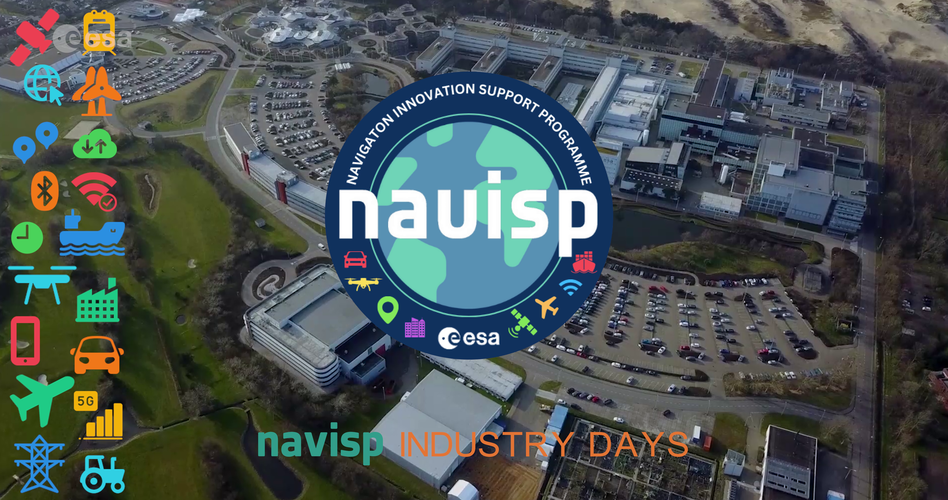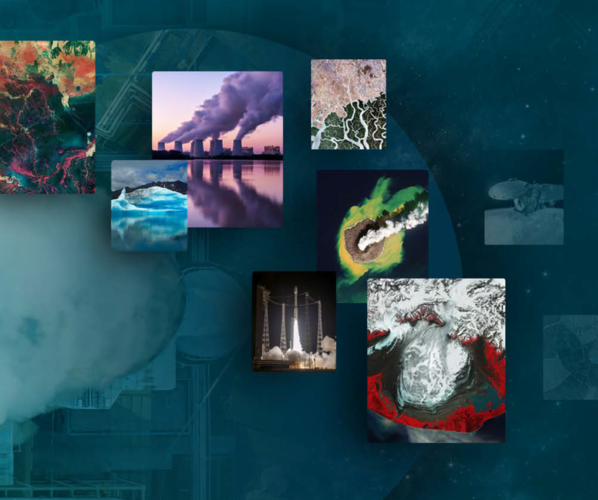
Copernical Team
Aalyria secures ESA contract for O-RAN compliant 5G/6G connectivity platform
 Aalyria, a frontrunner in cutting-edge software-defined and optical networking communications, has been awarded a pivotal development contract by the European Space Agency (ESA), with support from the UK Space Agency (UKSA). The project is set to pioneer a unique O-RAN compliant orchestration system, designed to integrate diverse connectivity assets across land, sea, air, and space, thereby enab
Aalyria, a frontrunner in cutting-edge software-defined and optical networking communications, has been awarded a pivotal development contract by the European Space Agency (ESA), with support from the UK Space Agency (UKSA). The project is set to pioneer a unique O-RAN compliant orchestration system, designed to integrate diverse connectivity assets across land, sea, air, and space, thereby enab Spire Global awarded space services contract by Lacuna Space to for 6 IoT Satellites
 Spire Global, Inc. (NYSE: SPIR), a leader in space-based data and analytics, has recently entered into a landmark Space Services contract with Lacuna Space, a prominent satellite IoT connectivity provider. This agreement marks a significant step in expanding global IoT (Internet of Things) networks, with Spire initially slated to build and launch six satellites equipped with Lacuna Space's paylo
Spire Global, Inc. (NYSE: SPIR), a leader in space-based data and analytics, has recently entered into a landmark Space Services contract with Lacuna Space, a prominent satellite IoT connectivity provider. This agreement marks a significant step in expanding global IoT (Internet of Things) networks, with Spire initially slated to build and launch six satellites equipped with Lacuna Space's paylo Sidus Space and Bechtel join forces for Artemis Mobile Launcher 2
 Sidus Space (NASDAQ: SIDU), a notable player in the Space and Data-as-a-Service sector, has recently announced its expanded involvement in the NASA Artemis missions. The company disclosed that it has secured an additional contract from Bechtel to manufacture supplementary cables for the NASA Mobile Launcher 2, a pivotal structure in the launch of Space Launch System (SLS) rockets.
This new
Sidus Space (NASDAQ: SIDU), a notable player in the Space and Data-as-a-Service sector, has recently announced its expanded involvement in the NASA Artemis missions. The company disclosed that it has secured an additional contract from Bechtel to manufacture supplementary cables for the NASA Mobile Launcher 2, a pivotal structure in the launch of Space Launch System (SLS) rockets.
This new Rogue Space Systems debuts with successful Barry-1 launch and deployment
 Rogue Space Systems Corporation, a pioneer in satellite servicing technologies, has proudly announced the triumphant launch, deployment, and operational startup of its inaugural satellite, Barry-1.
Since its launch on November 11th, the satellite has maintained stable communications and control, transitioning smoothly into the Launch and Early Orbit Phase (LEOP), set to extend into Decembe
Rogue Space Systems Corporation, a pioneer in satellite servicing technologies, has proudly announced the triumphant launch, deployment, and operational startup of its inaugural satellite, Barry-1.
Since its launch on November 11th, the satellite has maintained stable communications and control, transitioning smoothly into the Launch and Early Orbit Phase (LEOP), set to extend into Decembe Intuitive Machines' IM-1 Nova-C lunar lander delivered to Cape Canaveral
 Intuitive Machines, Inc. (Nasdaq: LUNR, LUNRW), a prominent space exploration, infrastructure, and services company, has announced the successful arrival of its IM-1 mission Nova-C lunar lander at Cape Canaveral, Florida.
Steve Altemus, CEO of Intuitive Machines, expressed his pride in this significant achievement. "This milestone is the culmination of four years of technical excellence, o
Intuitive Machines, Inc. (Nasdaq: LUNR, LUNRW), a prominent space exploration, infrastructure, and services company, has announced the successful arrival of its IM-1 mission Nova-C lunar lander at Cape Canaveral, Florida.
Steve Altemus, CEO of Intuitive Machines, expressed his pride in this significant achievement. "This milestone is the culmination of four years of technical excellence, o Firefly Aerospace to develop framework for DARPA's LunA-10 orbital spacecraft hubs
 Firefly Aerospace, Inc., a key player in space transportation, has announced its selection to develop a framework for integrated on-orbit spacecraft hubs. This initiative supports DARPA's 10-Year Lunar Architecture (LunA-10) capability study. The proposed hubs, leveraging the capabilities of Firefly's Elytra orbital vehicles, aim to provide versatile cislunar services, including refueling, deliv
Firefly Aerospace, Inc., a key player in space transportation, has announced its selection to develop a framework for integrated on-orbit spacecraft hubs. This initiative supports DARPA's 10-Year Lunar Architecture (LunA-10) capability study. The proposed hubs, leveraging the capabilities of Firefly's Elytra orbital vehicles, aim to provide versatile cislunar services, including refueling, deliv Ariel moves from drawing board to construction phase

NAVISP Industry 2023 @ ESTEC
 Video:
00:02:04
Video:
00:02:04
In November 2023, ESA hosted its annual NAVISP Industry Days event. This year, more than 200 positioning, navigation and timing (PNT) professionals from across Europe gathered at ESA’s Space Research and Technology Centre (ESTEC) in the Netherlands to explore together opportunities for innovation, commercialisation and collaboration via ESA’s Navigation Innovation and Support Programme (NAVISP).
For more information: visit https://navisp.esa.int
Delve into the new CEOS Earth Observation Handbook

Delve into the new CEOS Earth Observation Handbook
Unlocking the connectivity of 5G/6G satellite telecommunications systems

ESA is helping to unlock next-generation space connectivity to support communication everywhere and anywhere through the advancement of a new software platform from Aalyria, an innovative young company.
